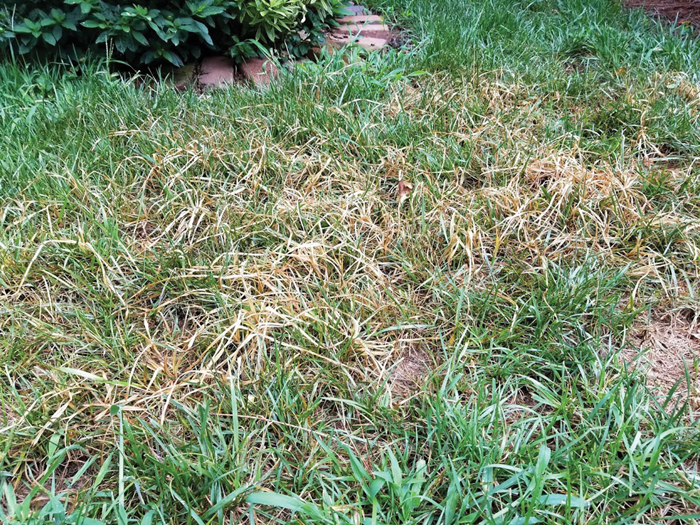Darrell Blackwelder: What to do about nutsedge
Published 12:00 am Friday, July 14, 2017

- Submitted photo The weed nutsedge after it has been treated. It is very difficut to eliminate from lawns and flower beds.
Heat and humidity, which are normally expected in July, have abruptly arrived. Even though August is generally the month when weeds flourish, they seem to have an edge this summer.
There is one particular grass-like weed, yellow nutsedge, that seems to be almost impossible to kill. The weed has become a problem in both lawns and flower beds throughout Rowan County. Yellow nutsedge is a particular problem now because of the abundant rainfall and warm weather experienced over the past few weeks. It can especially be a problem in poorly drained areas or in lawns with constant irrigation.
Unfortunately for homeowners, yellow nutsedge can be a very difficult weed to control. The weed has a grass-like appearance, but it’s officially classified as sedge and not a type of grass. The leaf blades are triangular shaped and grow very rapidly, especially in hot, humid weather. Nutsedge often reappears in just a couple of days after mowing.
Hand weeding nutsedge may be possible in flower beds early in the season before rhizomes have formed. Unfortunately, if the weed is allowed to flourish, it will produce underground rhizome (nuts) and newly emerging plants or daughter plants. Once this occurs, hand weeding usually results in breaking the stem below ground and a new plant emerges in a day or two.
Spot treatment with a systemic herbicide such as glyphosate (Roundup) controls newly emerging nutsedge, but the sprouts below ground generally continue to emerge. There are several herbicides on the market that will control the weed.
Many landscape maintenance professionals prefer to use post emergence herbicides on the market such as Sedgehammer or Sedge Ender to provide adequate control. These are over-the-counter herbicides that control newly emerging nutsedge and leave a residual herbicide layer preventing nutsedge from emerging for about four weeks. It is very important to read and follow label instructions before applying any pesticide.
Homeowners with a history of yellow nutsedge in flower and shrub beds may want to also consider a pre-emergence treatment in the early spring. Pennant Magnum, a pre-emergence herbicide, will only suppress yellow nutsedge.
Weed scientists at N.C. State University reveal a more accurate term would be partial control. Shrub beds treated with a pre-emergence herbicide in the spring before germination will most likely need a post-emergence control program with an application of Sedgehammer or other herbicides. Unfortunately, some hand weeding in the early spring cannot be ruled out as method of control.
For more detailed information on nutsedge control, follow these links on the web:http://www.clemson.edu/extension/hgic/pests/weeds/hgic2312.html and http://www.turffiles.ncsu.edu/weeds/yellow-nutsedge




